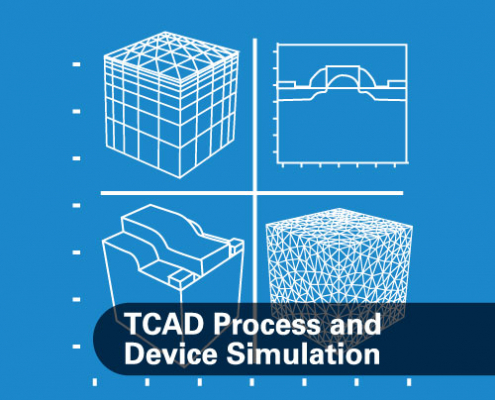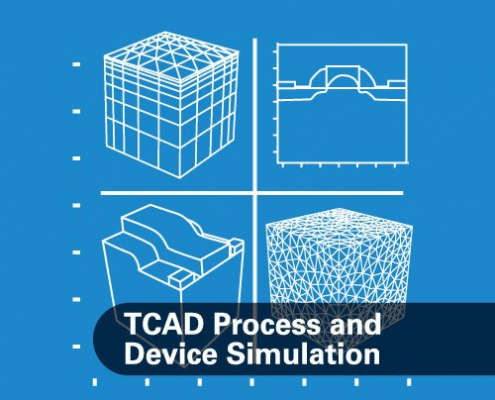
Atomistic Analysis and Next Generation Computing at IEDM 2019
IEDM is THE device conference with more than a thousand participants from major companies and R&D institutes. Many talks were dedicated to new memory devices and circuits, including Ferroelectrics, MRAM, RRAM, driven by the requirements of AI processing. EUV is definitely there for 3nm and beyond. 3D integration was shown for LP-HP logic and RF. Gate-All-Around devices, with nanowires or nanosheets are mature versus FinFET.

TCAD Recommended Textbooks
CMOS: Mixed-Signal Circuit Design, Second Edition
R. Jacob Baker.
Published…
 /wp-content/uploads/2019/11/silvaco-logo.png
0
0
Ingrid Schwarz
/wp-content/uploads/2019/11/silvaco-logo.png
Ingrid Schwarz2019-11-21 21:22:242021-10-13 09:31:42Optimization of the Select Gate Transistor in a 3D NAND Memory Cell
/wp-content/uploads/2019/11/silvaco-logo.png
0
0
Ingrid Schwarz
/wp-content/uploads/2019/11/silvaco-logo.png
Ingrid Schwarz2019-11-21 21:22:242021-10-13 09:31:42Optimization of the Select Gate Transistor in a 3D NAND Memory Cell
Silvaco Exhibits and Presents Invited Paper on Atomistic Simulation at IEDM 2019
The IEEE International Electron Devices Meeting (IEDM) is the world’s preeminent forum for reporting technological breakthroughs in the areas of semiconductor and electronic device technology, design, manufacturing, physics, and modeling. It is the flagship conference for
Nanometer-scale CMOS transistor technology, advanced memory, displays, sensors, MEMS devices
Novel quantum and nano-scale devices and phenomenology
Optoelectronics, devices for power and energy harvesting, high-speed devices
Process technology and device modeling and simulation
 /wp-content/uploads/2019/11/silvaco-logo.png
0
0
Ingrid Schwarz
/wp-content/uploads/2019/11/silvaco-logo.png
Ingrid Schwarz2019-11-07 21:20:042021-10-13 09:31:55Simulating Silicon Devices at Cryogenic Temperatures
/wp-content/uploads/2019/11/silvaco-logo.png
0
0
Ingrid Schwarz
/wp-content/uploads/2019/11/silvaco-logo.png
Ingrid Schwarz2019-11-07 21:20:042021-10-13 09:31:55Simulating Silicon Devices at Cryogenic Temperatures
SiC and Other Wide Bandgap Materials: From Process to Device Simulation
This webinar provides an overview of Silvaco’s TCAD tools. It introduces Silvaco’s process and device simulation capabilities for wide bandgap materials. In addition, various practical examples are demonstrated and discussed, such as SiC JBS diodes and GaN FETs.

How TCAD Can Optimize Power Electronics
The power electronics (PE) market is growing rapidly, driven by the accelerating demand of EV and HEV vehicles. Power devices lend themselves to design and manufacturing innovations at the transistor-level to improve device performance and reduce development and production costs. Silicon-carbide (SiC), gallium-nitride (GaN), and other wide bandgap materials have started to replace silicon in high-voltage power devices.
 /wp-content/uploads/2019/11/silvaco-logo.png
0
0
Erick Castellon
/wp-content/uploads/2019/11/silvaco-logo.png
Erick Castellon2019-10-01 17:25:482025-02-20 22:33:29TCAD
/wp-content/uploads/2019/11/silvaco-logo.png
0
0
Erick Castellon
/wp-content/uploads/2019/11/silvaco-logo.png
Erick Castellon2019-10-01 17:25:482025-02-20 22:33:29TCAD
The Need for Advanced Wide Bandgap Power Electronics
PowerAmerica’s strategic roadmap for next generation wide bandgap (WBG) power electronics (PE) came out earlier this year. The public version of the roadmap includes a background/introduction and market forecast pertaining to silicon carbide (SiC) and gallium nitride (GaN) PE. I learned a great deal about SiC & GaN PE in this roadmap and I have copied the relevant sections below.

3D TCAD Simulation for Power Devices
y first IC design back in 1978 was a DRAM and it ran on 12V, 5V and -5V, but then my second DRAM was using only a 5V supply. Today we see SOCs running under a 1V supply voltage, but there is a totally different market for power devices that are at the other end of the voltage spectrum and they handle switching ranges from 12V – 250V. To learn more about power devices and how the process and device modeling is done, I read a Silvaco publication entitled Advanced Process and Device 3D TCAD Simulation of Split-Gate Trench UMOSFET.
